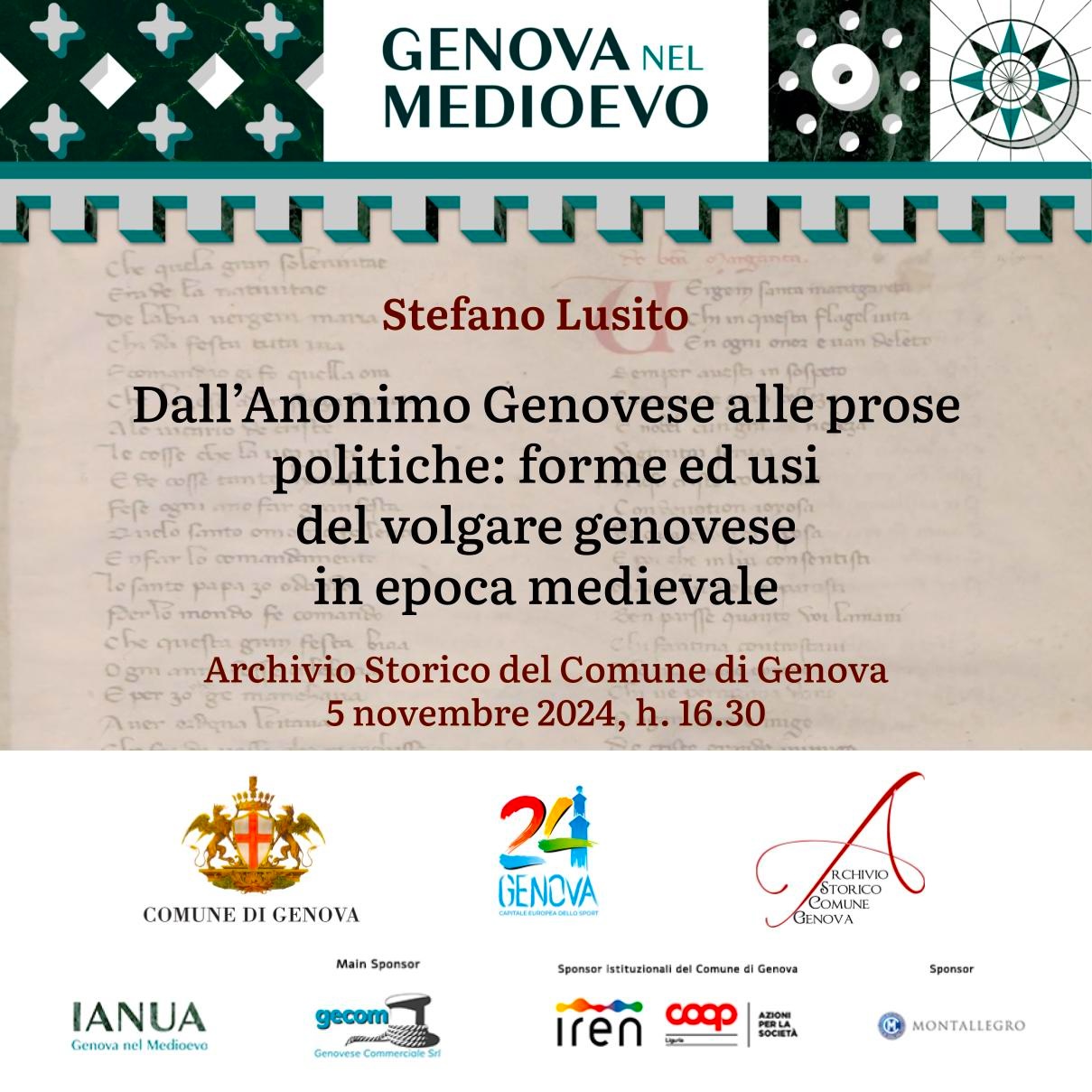“From the Genoese Anonym to Political Prose: Forms and Uses of the Genoese Vernacular in Medieval Times”

A lecture titled “From the Genoese Anonym to Political Prose: Forms and Uses of the Genoese Vernacular in Medieval Times” by Stefano Lusito will be held on November 5 at 4.30pm at the Historical Archive of the Municipality of Genoa.
For good reason, the Genoese Anonym – who lived between the 13th and 14th centuries, whose works have reached us in two different manuscript codices – can be considered the founder not only of literature but of the entire written use of Genoese as a language with its own communicative functionality and precise identity value. In particular, the strong “civic” component of his rhymes – focused on exalting patriotic glories, often specifically referencing demographic and urban aspects of the regional capital, and criticizing internal struggles within the Commune – makes his production an extremely significant document for understanding various elements that describe the history of Genoa in the late medieval period.
Starting from the decades following the Anonym’s work (rediscovered only at the beginning of the 19th century, but likely known in previous centuries), Genoese saw its uses expand both as a means of transmitting knowledge and learning (especially in vernacularizations and translations of widely circulating texts in the Romance area), and as the language of the local chancellery – alongside Latin – in administrative and political documents written both on the mainland and in the commercial colonies of the Commune of Genoa scattered throughout the Mediterranean. For example, a treaty stipulated in 1380 in Crimea with the Khan of the Tartars was translated into Genoese, and even in 1473, Ottoman Sultan Mehmed II used Genoese to communicate to the Genoese stationed in Chios his victory in battle against a rival leading a Turkoman confederation.
The lecture, starting from the production of the Genoese Anonym (whose two attestation codices are currently on display as part of the “Ianua – Genoa in the Middle Ages” initiatives), will present forms and contents of the author’s collection, and subsequently mention the main uses of the local idiom in medieval times. During the presentation, the internal evolution of Genoese from its earliest attested phases to the present day will also be briefly reviewed and exemplified in its general aspects.
 Council for
Council for